Invasive species are non-native plants and animals that rapidly spread, threatening the well-being of indigenous species and habitats. Unfortunately, Texas is no stranger to the issue of invasive species.
From destructive pests to exotic fish breeds, these 11 invaders have caused immense damage to Texas and its environment:

Read on to learn more about the most notorious invasive species in Texas.
1. Asian Tiger Mosquito (Aedes albopictus)
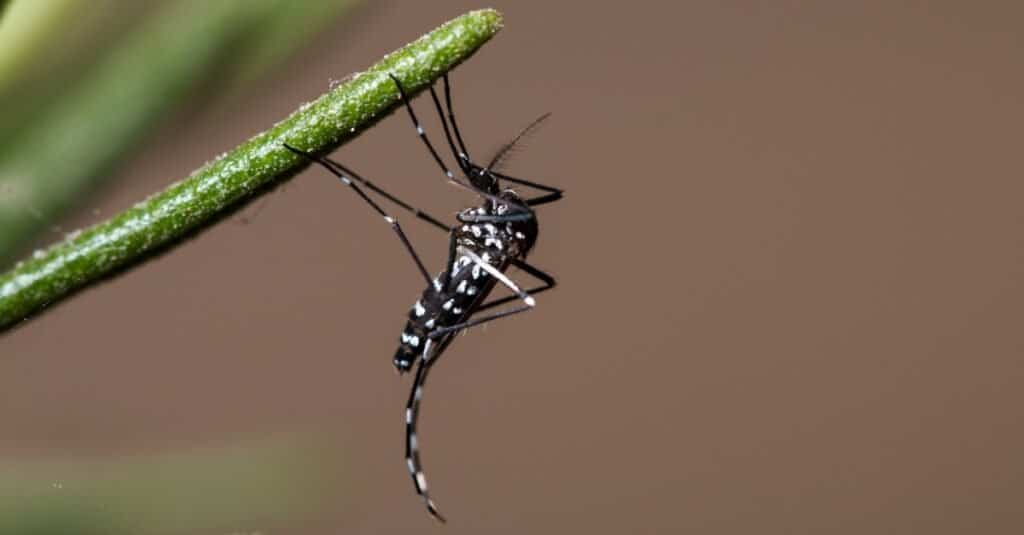
The Asian
tiger
mosquito is small, with distinctive black and white stripes.
©Oliver Spiteri/Shutterstock.com
This tiny, black-and-white mosquito carries a variety of dangerous diseases and is the most common invasive species in Texas. This species has been linked to outbreaks of West Nile virus, Chikungunya virus, and Dengue fever.
The Asian tiger mosquito is native to Southeast Asian countries but has spread around the globe. In the United States, it is most prevalent in Texas and other parts of the Gulf Coast. It is small, with distinctive black and white stripes. It grows to be about 0.15 to 0.24 inches or 4-6 mm in length.
These mosquitoes prefer to live in areas where there is standing water. They are most active during the day and will feed on human and animal blood. You can find them near ponds, lakes, and other sources of standing water throughout Texas. They are also common in urban and suburban areas and near agriculture.
2. Africanized Honeybee (Apis mellifera scutellata)
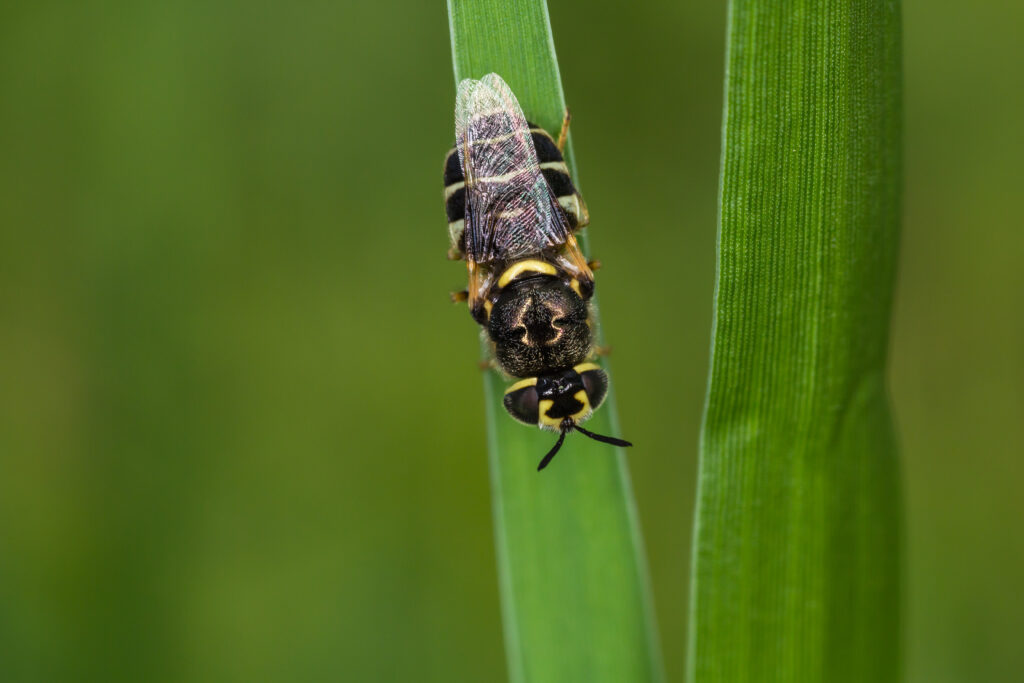
Africanized honeybees have spread to Mexico, Central and South America, Arizona, California, New Mexico, Nevada, Texas, and Florida.
©aeiddam0853578919/Shutterstock.com
More commonly known as “killer bees,” this invasive species was first brought to the United States in 1957 from west Africa. Africanized honeybees are hybrids of European and African species, creating a more aggressive bee capable of surviving in harsher climates.
These bees are highly defensive when protecting their hives. They defensively swarm, making them more dangerous than other bees. These honeybees attack predators or anyone they perceive as a threat, and their sting is painful and venomous.
Africanized honeybees have spread to Mexico, Central and South America, Arizona, California, New Mexico, Nevada, Texas, and Florida.
They are smaller than their European counterparts and have a darker color. Their wings are longer than the average bee’s wings, allowing them to fly further distances. Africanized honeybees can survive in much harsher climates than their European counterparts and inhabit tropical and subtropical regions.
Africanized honeybees are a threat to native bee populations due to their hybrid vigor and can make it difficult for native species to compete. They are also a more significant threat to humans due to their aggressive nature.
3. Red Fire Ants (Solenopsis invicta)
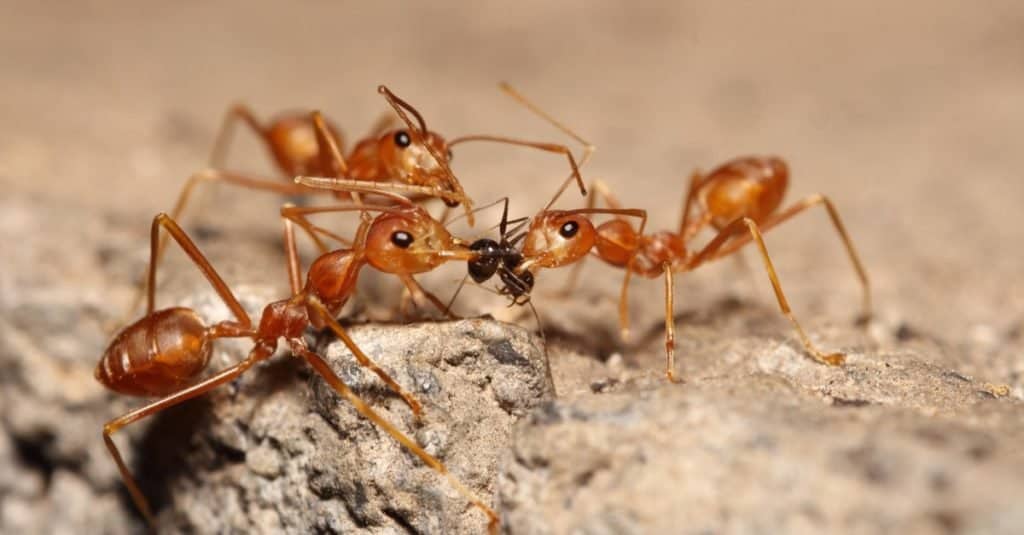
Red fire ants are among the most aggressive ant species, and they will sting and bite anything that disturbs them.
©sarawuth wannasathit/Shutterstock.com
The red fire ant is an invasive species that has become one of the most significant threats to ecosystems worldwide. Native to Brazil, these tiny, reddish-brown ants have spread to almost every continent, where they wreak havoc with their aggressive behavior and painful stings.
Red fire ants are tiny, measuring about 1/16 to 1/5 inch in length. They get their name from their reddish-brown color and usually live in colonies of up to 500,000 individuals. The queen ant lays eggs that hatch into larvae. Once the larvae develop into adults, these individuals become part of the colony and help ensure its survival.
Red fire ants are among the most aggressive ant species, and they will sting and bite anything that disturbs them. They are incredibly aggressive when disturbed in their nests, which they usually build in the ground or on low-lying vegetation.
These ants primarily feed on other insects but can also eat seeds, flowers, and other small animals. Their diet also includes scraps of food that humans leave behind, making them a real problem for people living in areas where their population has grown.
4. Feral Pigs (Sus scrofa)
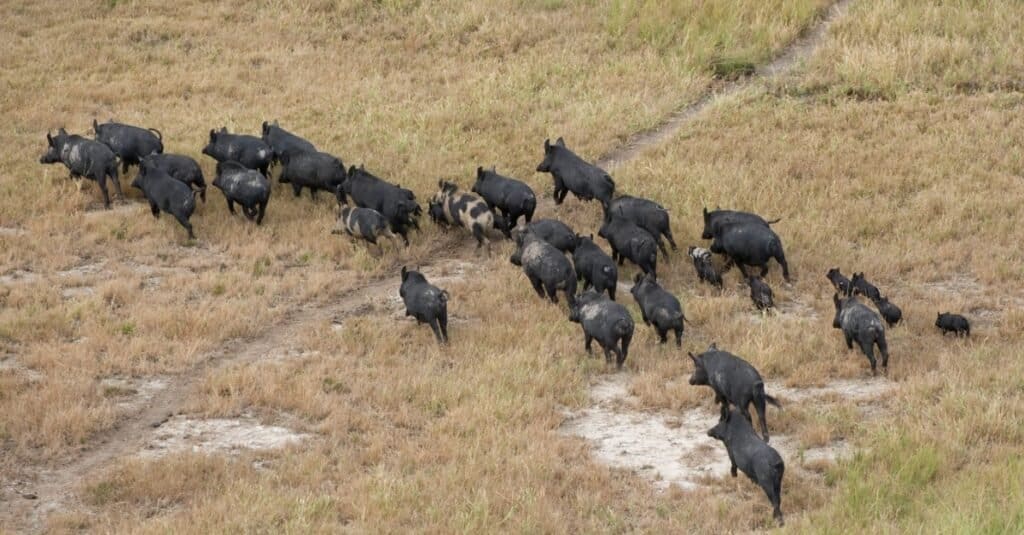
Feral pigs uproot trees, destroy crops, cause soil erosion, and contaminate water sources.
©iStock.com/JohnCarnemolla
These invasive animals are often referred to as “wild hogs.” This species is a big problem in the United States, causing about $1.5 billion in yearly damages.
Feral pigs destroy native ecosystems and harm human activities. They uproot trees, destroy crops, cause soil erosion, and contaminate water sources. They also compete with native species for food and eat small reptiles, amphibians, birds, and even deer.
In addition to the damage they cause to ecosystems, feral pigs also pose a risk to humans, as they can spread diseases such as swine flu, rabies, and salmonella. They are also dangerous on roads and highways, as they can cause serious car accidents.
Feral pigs are typically smaller than domestic pigs but can still weigh up to a couple hundred pounds. They vary in color from black to blond and are usually a mix of both. They have long, bristly hair along their backs, short legs, and long snouts, ideal for rooting in the soil.
Feral pigs are very social, living in matriarchal groups of four to 20 individuals. They are omnivores, meaning they will eat almost anything they can get their snouts on. Their diet consists of various plants, insects, nuts, fruits, and small animals. They can live in various habitats, including forests, grasslands, wetlands, and agricultural areas. They are very adaptable and can survive in many different climates.
Feral pigs are difficult to control due to their high reproduction rate and adaptability. However, several strategies are successful in managing and reducing their numbers.
5. Nutria (Myocastor coypus)
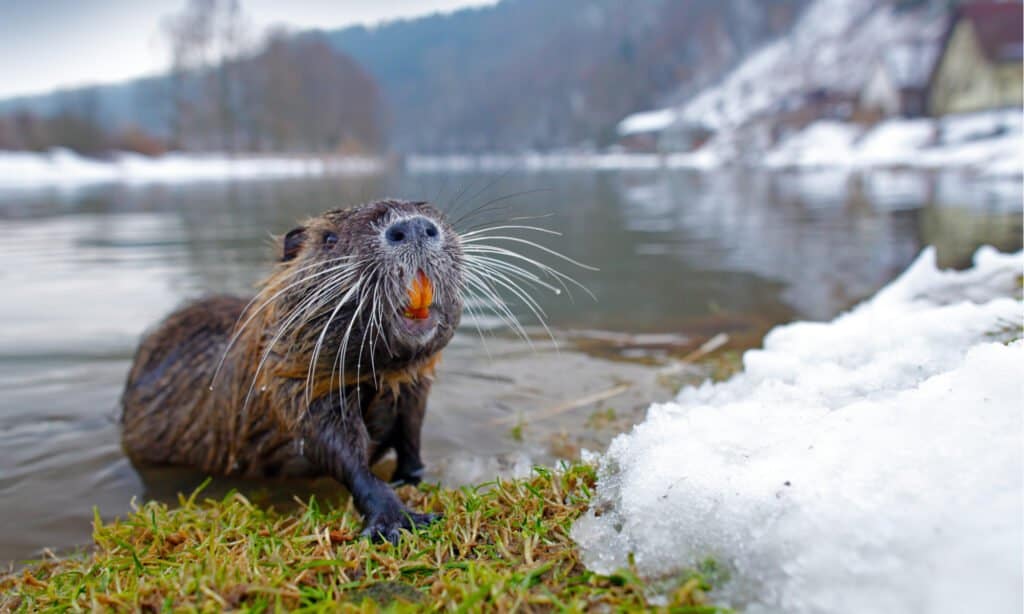
They are between 15 to 20 inches long and have stout bodies, short legs, and large webbed feet, not to mention attractive orange teeth.
©Ondrej Prosicky/Shutterstock.com
Nutrias, also known as coypu or river rats, are semi-aquatic animals native to South America. They have become invasive in many parts of the world, including North America and Europe. As herbivores, they mainly feed on grass, sedges, and shrubs. They are usually between 15 to 20 inches long and have stout bodies, short legs, and large webbed feet.
Nutrias are very social creatures and live in groups called colonies. They construct burrow systems that can reach up to 10 feet deep and up to 65 feet wide. They use these burrows for shelter, protection from predators, and nesting and raising young.
Nutrias are active both day and night, though they tend to be more active during the evening and early morning hours. They are also strong swimmers and feed on aquatic plants in shallow waters.
6. Asian Clams (Corbicula fluminea)

The invasive Asian clams have a laterally compressed shape and a thick shell that is generally smooth and shiny.
©Jay Ondreicka/Shutterstock.com
Asian clams are an invasive species in Texas with a wide distribution in the United States. They are small (on average, less than 1.5 inches in size), and they can filter-feed aquatic animals, causing significant ecological damage when introduced into non-native ecosystems. They live in lakes and rivers, where they attach themselves to rocks, shells, and other hard surfaces.
Asian clams have a laterally compressed shape, meaning they are wider than they are tall. They have a thick shell that is generally smooth and shiny. Asian clams are filter feeders, taking in small amounts of water and nutrients through their gills. They typically feed on phytoplankton but can also consume small particles of organic matter.
Asian clams are native to East Asia but have been introduced to several continents, making it to the United States in the early 2000s. SInce then, they have spread rapidly throughout the country. They inhabit rivers, lakes, and other freshwater habitats in warm climates. These clams are responsible for an increase in water turbidity and nutrient levels that can lead to harmful algae blooms and the displacement of native species. They seriously threaten aquatic habitats and can cause significant ecological damage if left unchecked.
7. Apple Snails (Ampullariidae)
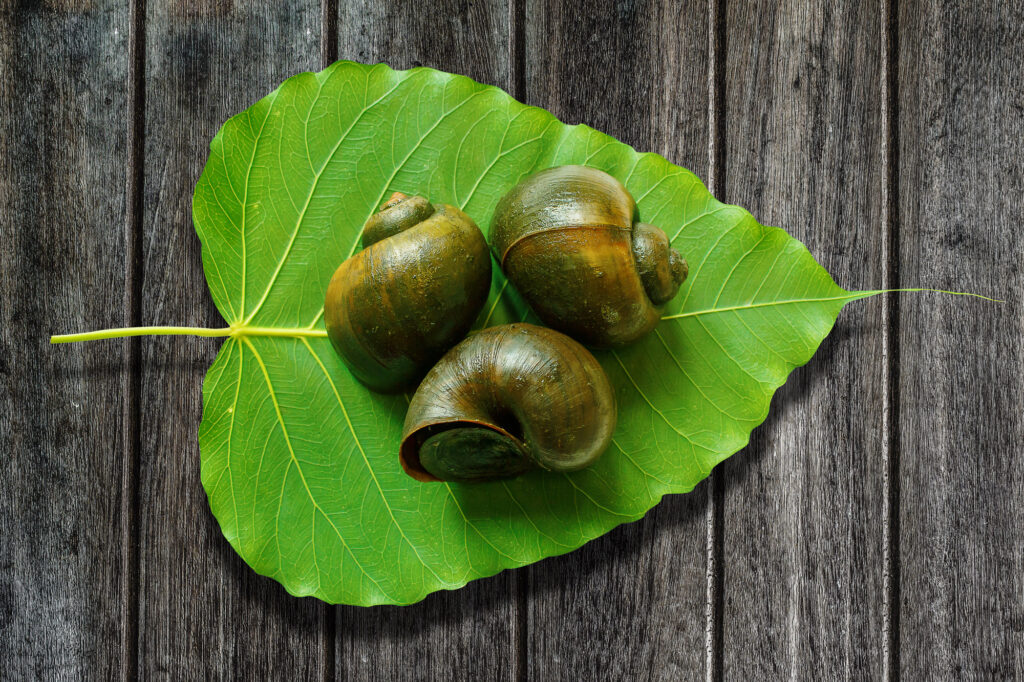
Apple snails breathe through both lungs and gills.
©Jiffy Avril/Shutterstock.com
Apple snails are giant freshwater snails native to South America and the Caribbean. They have a bright yellow, apple-like shell that can grow up to 1 inch in diameter. Some aquarium owners keep apple snails as pets because they help keep tanks clean by eating algae and other debris. They feed on various plants, algae, and decaying matter in the water.
They threaten the Texas environment because they are highly prolific breeders and can out-compete native species for food. Apple snails and many other introduced species are a major cause of the decline of many native species in the United States, including in Texas.
8. Hydrilla (Hydrilla verticillata)
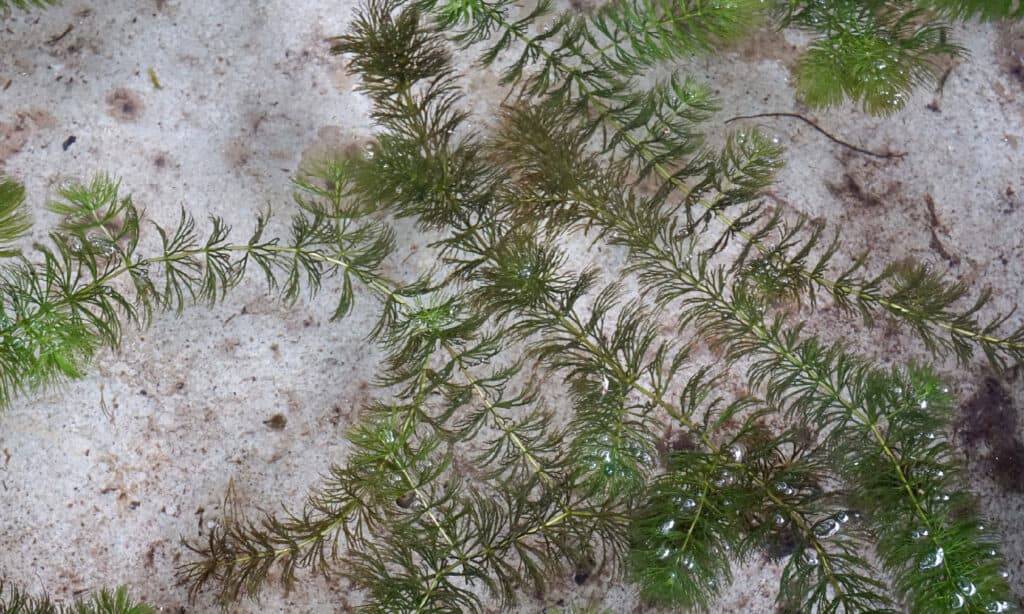
This out-of-control plant forms monocultures that are extremely hard to eradicate and can choke entire waterways.
©iStock.com/mansum008
Hydrilla is a submerged aquatic plant native to tropical and subtropical parts of the world. It forms monocultures that are extremely hard to eradicate and can choke entire waterways. As a result, it is a major environmental problem in the United States, where it grows in lakes, rivers, and stream systems in 23 states.
Hydrilla was first introduced to the United States as an aquarium plant in the 1950s, and it has since spread to some of America’s most important aquatic ecosystems. It is an incredibly fast-growing species and can quickly cover large water areas. It reaches depths of over 30 feet in some places.
9. Giant Salvinia (Salvinia molesta)
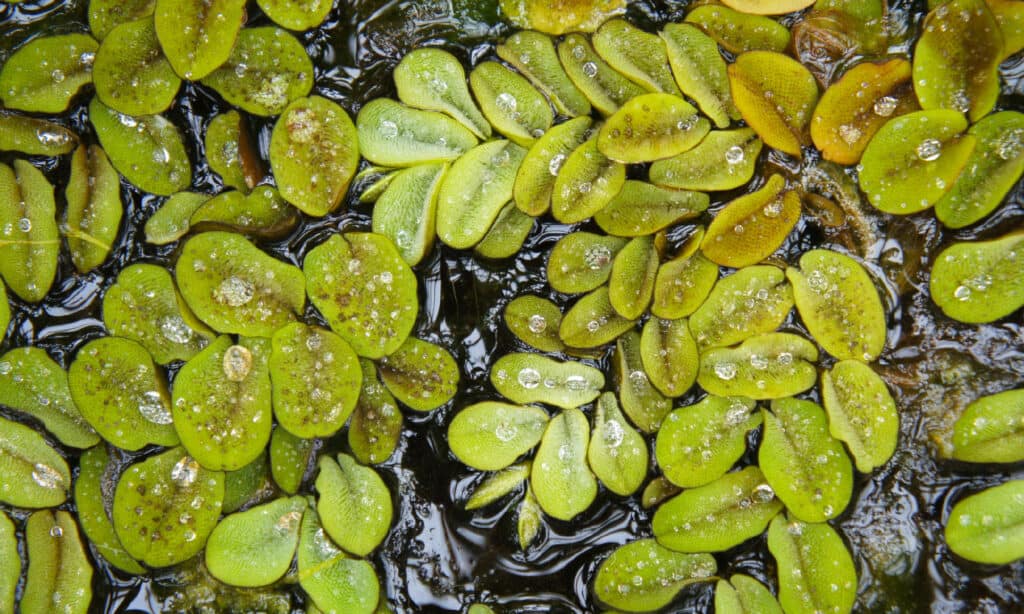
Salvinia reproduces quickly and can form a thick layer on the surface of water bodies, blocking sunlight from reaching the aquatic life below.
©iStock.com/skymoon13
Giant salvinia is a species of aquatic fern that has caused environmental upheavals by taking over waterways and disrupting natural ecosystems. Native to South America, it has been classified as an invasive species in many parts of the world.
It reproduces quickly and can form a thick layer on the surface of water bodies, blocking sunlight from reaching the aquatic life below. It can also deplete oxygen levels in the water and reduce native species’ populations.
10. Russian Olive (Elaeagnus angustifolia)
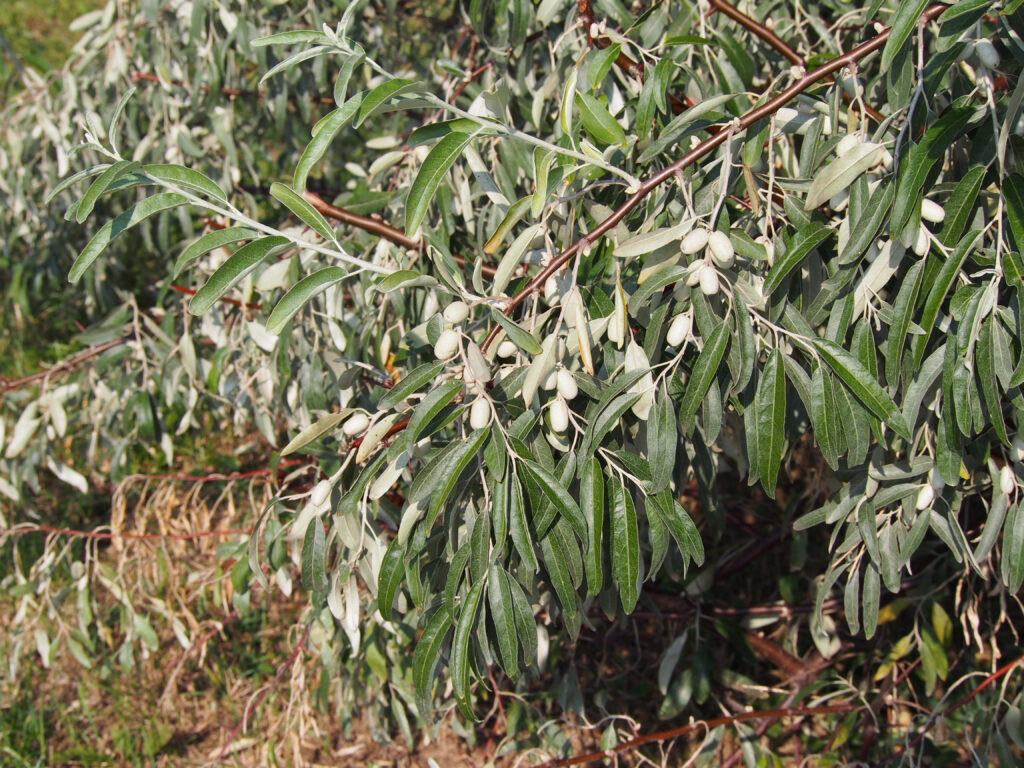
These olive-like trees have characteristic silver-green foliage and whitish, scaly bark.
©Anna Gratys/Shutterstock.com
Russian olives are an invasive species native to Asia but made it to the United States in the 1800s, where gardeners used them for landscaping purposes. Many states now consider them a noxious weed and they are particularly invasive in riparian areas.
Russian olive trees have characteristic silver-green foliage and whitish, scaly bark. The leaves can change color throughout the year, ranging from silver to dark green. These trees also produce fragrant, small white flowers and fruits that resemble olives.
11. Japanese Climbing Fern (Lygodium japonicum)
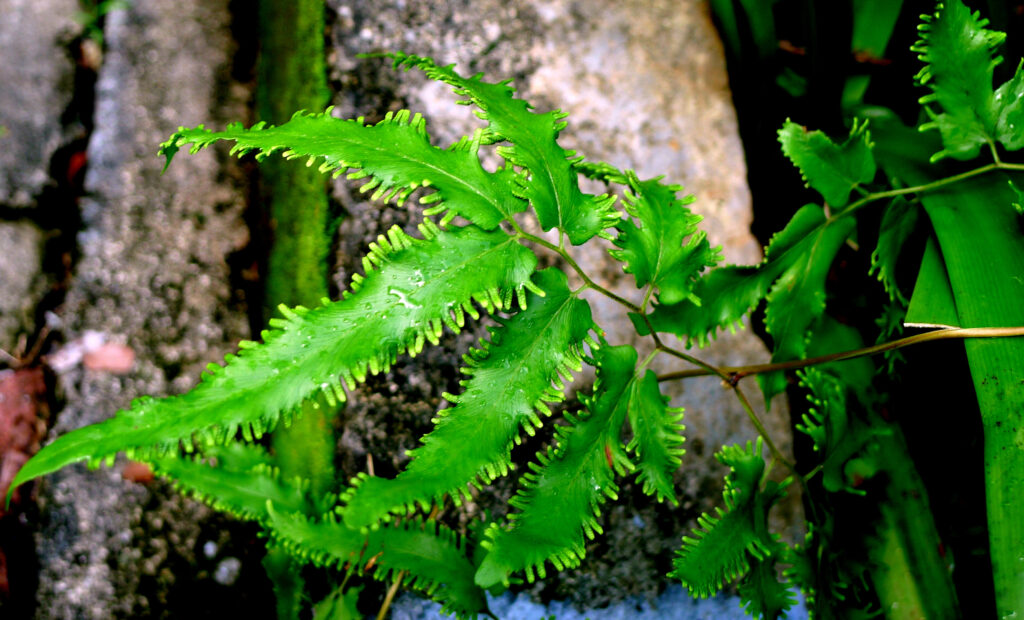
As its name suggests, the Japanese climbing fern can climb, which makes it especially hard to control.
©Thecloudysunny/Shutterstock.com
The Japanese climbing fern is an invasive species native to East Asia. It is highly adaptable and can grow in various habitats, including wetlands, forests, and disturbed areas. It is a significant problem in countries like Australia and the United States.
As its name suggests, it can climb, which makes it especially hard to control. Its fronds can grow up to 10 feet in length, so it can be very difficult to contain. Furthermore, this climbing fern can reproduce asexually, meaning it can spread quickly and easily.
Summary of the 11 Invasive Species Roaming Free in Texas (and Wreaking Havoc)
| Invasive Species | Species Type | Hazard |
|---|---|---|
| Asian Tiger Mosquito | Insect | Carry dangerous diseases. |
| Africanized Honeybee | Insect | Dangerously defensive with a painful, venomous sting. Their hybrid vigor is a threat to normal honeybees. |
| Red Fire Ants | Insect | Very aggressive behavior and painful stings for humans and other animal life. |
| Feral Pigs | Mammal | Uproot trees, destroy crops, cause soil erosion, contaminate water sources, and carry diseases. |
| Nutria | Mammal | Damage vegetation and crops, including plants that hold wetland soil together thus destroying the banks of ditches, lakes, marshes and other wetlands. |
| Asian Clams | Mollusk | Filter-feed aquatic animals, thus damaging ecosystems, and increase water turbidity and nutrient levels that can lead to harmful algae blooms and the displacement of native species. |
| Apple Snails | Mollusk | Highly prolific breeders that can out-compete native species for food. |
| Hydrilla | Plant | Forms monocultures that are extremely hard to eradicate and can choke entire waterways. |
| Giant Salvinia | Plant | Reproduces quickly and can form a thick layer on the surface of water bodies, blocking sunlight from reaching the aquatic life below; also depletes oxygen levels in the water. |
| Russian Olive | Plant | Like a weed, chokes out native plants and prevents them from re-establishing. |
| Japanese Climbing Fern | Plant | Can grow dense mats that shade the plants they are growing on, reducing plant vigor and causing plant death. |
The photo featured at the top of this post is © Sonja Guijarro/Shutterstock.com
Thank you for reading! Have some feedback for us? Contact the AZ Animals editorial team.






